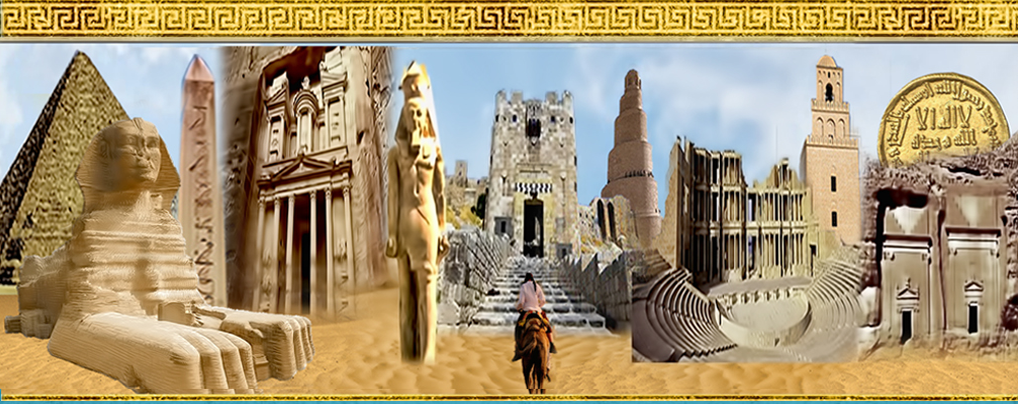Journal of the General Union of Arab Archaeologists

Abstract
(En)
This study was done on an archaeological leather document preserved in Egyptian Museum storeroom under N°. JE90809 SR 5/13677, excavated in 1966. The leather document showed different aspects of deterioration types. Different analytical methods were used for identifying the components of the leather document to explain its mechanism of deterioration process. Analytical methods used were: visual assessment, documentation process by high resolution camera and scanner in multispectral imaging (MSI), diagnostic examinations using Multi Spectral Imaging (VIS-UV-IR), isolation and identification of different types of fungi, investigation of the surface morphology and animal type using digital light microscope (Dino light), stereo microscope (S.M.) and polarizing microscope (P.M.), identification of ink binder, amino acids degradation and tanning materials by Fourier transformation infrared spectrophotometry (FTIR). It is a qualitative analysis to give general information concerning collagen, identification of inks by X-ray diffraction (XRD), and measuring the thickness by micro meter. In addition to suggesting a new method for museum exhibition for the archaeological leather document as the preparation of a new method of exhibition is considered one of the most important goals of this study, because the current method of exhibition is regarded as a major reason for the deterioration of the studied document.
The results revealed that the microscopic examinations of samples clarify that the type of skin used was sheep in comparison with the standard samples. It also explained the deformation of the appearance, contaminations from stains and dusts, and damages caused by physical factors. X-ray diffraction results showed that the ink used was made of carbon black ink. In addition, the results showed that thickness measurement numbers were different which indicate somehow that the manufacturing process was not so perfect. The results of FTIR proved also the degradation of the collagen in the archaeological leather document, the binding agent was Arabic gum and the leather was tanned with vegetable tanning. Isolation and identification of micro-organisms clarified that the most dominant fungi isolated from the archaeological leather document were: Aspergillus niger, Aspergillus sulphureus, Aspergillus versicolor, Aspergillus sydowii, Penicillium chrysogenum, Penicillium islandicum, Alternaria alternata, Aspergillus flavus, and Aspergillus terreus. Finally, the storage of the leather document was very poor which led to different aspects of deterioration. That prompted the authors to suggest a new method for exhibition for the archaeological leather document.
(Ar)
قطعة من الجلد الأثرى محفوظة فى مخزن المتحف المصرى برقم JE90809 5/13677، تم اكتشافها عام 1966، وتعانى الوثيقة الجلدية مظاهر التلف المختلفة. تركز هذه الدراسة على استخدام التقنيات التحليلية الحديثة لتحديد مكونات المخطوطة لشرح عمليات التلف. استخدمت فى الدراسة التقييم البصرى، وعملية التوثيق بواسطة كاميرا عالية الدقة والماسح الضوئى فى التصوير متعدد الأطياف (MSI) والفحوص التشخيصية باستخدام التصوير متعدد الأطياف (VIS-UV-IR) ، وعزل وتحديد الفطريات، والتحقيق فى الشكل السطحي ونوع الحيوان باستخدام أنواع مختلفة من المجاهر: المجهر الضوئى الرقمى، المجهر الاستريو (SM) ، المجهر الاستقطابى (PM) ايضا تم تحديد نوع الحبر، ومواد الدباغة بواسطة التحليل الطيفى بالأشعة تحت الحمراء (FTIR) ، وتم تحديدنوع الحبر بواسطة حيود الأشعة السينية (XRD) ، وتم قياس السمك للقطعة. بالإضافة إلى اقتراح طريقة جديدة للعرض المتحفى للوثيقة حيث أن طريقة العرض الحالية هى إلى حد ما السبب الذى تسبب في تلف القطعة.
نتائج حيود الأشعة وقد أوضحت نتائج الفحوصات للعينات أن نوع الجلد المستخدم هو الأغنام مقارنة بالعينات القياسية. كما أظهرت السينية أن الحبر الأسود المستخدم هو الحبر الكربونى. بالإضافة إلى ذلك، أظهرت النتائج اختلافًا فى أرقام نتائج قياس السمك للقطعة مما يدل بطريقة أو بأخرى على أن عملية التصنيع لم تكن مثالية. كما أثبتت نتائج FTIR تلف وتدهور الكولاجين فى الوثيقة الجلدية، وكان الوسيط الصمغ العربى والجلد المدبوغ تم دباغته بالتانين (الدباغة النباتية). أوضح عزل الكائنات الحية الدقيقة أن الفطريات المعزولة من هي: Aspergillus niger و Aspergillus sulphureus و Aspergillus versicolor و Aspergillus sydowii و Penicillium chrysogenum و Penicillium islandicum و Alternaria Alternus و Aspergillgillus flavus. وأخيرًا كان تخزين المخطوطة رديئًا للغاية مما أدى إلى جوانب مختلفة من التدهور. ودفع ذلك المؤلفين إلى اقتراح طريقة جديدة للعرض المتحفى للوثيقة الجلدية الأثرية.
Recommended Citation
ʾEl-shamy, ʾElsayda-Nafesa and Othman, Moʾamen
(2021)
"ANALYTICAL STUDY OF THE ARCHAEOLOGICAL LEATHER DOCUMENT PRESERVED IN EGYPTIAN MUSEUM AND NEW PROPOSAL FOR MUSEUM EXHIBITION,"
Journal of the General Union of Arab Archaeologists: Vol. 6:
Iss.
1, Article 6.
Available at:
https://digitalcommons.aaru.edu.jo/jguaa/vol6/iss1/6

